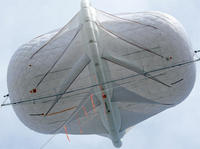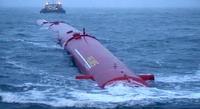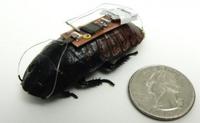-
The spring 2010 BP oil disaster could have been prevented: expert
The BP oil disaster in the Gulf of Mexico during the spring of 2010 could have been prevented if the experiences of earlier disasters had been put to use, an expert claims; the U.S. government is now accusing BP of gross negligence and deliberate misconduct, and taking the company to court
-
-
The historical and future probabilities of 9/11-size terrorist events
On the eleventh anniversary of the 9/11 attacks, two statisticians apply statistical methods to try and accurately estimate the probability of a 9/11-size terrorist attack occurring during the next decade; examining the historical data from 1968 to 2007, they show that the likelihood of a 9/11-size attack occurring within this time frame was between 11 and 35 percent; looking forward, the likelihood increase to between 25 and 50 percent – and, under certain circumstances, to 95 percent
-
-
Bolstering e-mail security
On the whole, security is not a primary concern for most day-to-day e-mails, but some e-mails do contain personal, proprietary, and sensitive information, documents, media, photos, videos, and sound files; the open nature of e-mail means that they can be intercepted and if not encrypted, easily read by malicious third parties
-
-
Canada funds digital technology to enhance maritime security, surveillance
New funding will allow exactEarth to improve its ability to locate more than 80,000 ships daily anywhere around the world and transmit this information quickly to its customers; this data is used within Canada and globally for a number of purposes, including enhancing maritime security and surveillance as well as search and rescue support
-
-
There is enough wind power to meet global energy demand

There is enough energy available in winds to meet all of the world’s demand; atmospheric turbines that convert steadier and faster high-altitude winds into energy could generate even more power than ground- and ocean-based units
-
-
Predicting waves’ height, force could double marine-based energy

In the search for alternative energy, scientists have focused on the sun and the wind; there is also tremendous potential in harnessing the power of the ocean’s waves, but marine energy presents specific challenges that have made it a less promising resource; one of these challenges is the fact that waves differ in terms of their size and force; forecasting wave height one second in advance optimizes energy collection
-
-
Next generation of advanced climate models needed
From farmers deciding which crops to plant next season, to mayors preparing for possible heat waves, to insurance companies assessing future flood risks, to those responsible for infrastructure protection having to decide how best to use scarce resource to mitigate climate change-induced disasters, an array of stakeholders from the public and private sectors rely on and use climate information; the U.S. National Research Council says he U.S. collection of climate models should advance substantially to deliver more detailed, smaller scale climate projections
-
-
Urchin-loving otters can help fight global warming

A thriving sea otter population that keeps sea urchins in check will in turn allow kelp forests to prosper; the spreading kelp can absorb as much as twelve times the amount of CO2 from the atmosphere than if it were subject to ravenous sea urchins
-
-
Raytheon opens STEM teacher award program
Raytheon has opened the 2012 application process for its Raytheon-Engineering is Elementary (EiE) Teacher Scholarship Program; during the 2012-13 school year, Raytheon will grant awards of $3,000 each for selected elementary school teachers nation-wide whose applications best demonstrate innovative methods of generating student enthusiasm about engineering concepts
-
-
New search-and-rescue tool: remotely controlled cockroaches

Researchers have developed a technique that uses an electronic interface to remotely control, or steer, cockroaches; remotely controlling cockroaches would allow first responders to create a mobile web of smart sensors that uses cockroaches to collect and transmit information, such as finding survivors in a building that has been destroyed by an earthquake
-
-
Protecting buildings from earthquakes by hiding them

Engineers have come up with an inventive and exciting idea for protecting buildings from earthquakes: hide them (the buildings, that is); the engineers say that placing specialized rubber under the building would diverts certain temblor shock waves, leaving the building virtually untouched by them
-
-
Scientists question earthquake prediction methods
From 2008 to 2011, three earthquakes have significantly damaged different parts of the world. Those quakes were significantly underestimated by scientists and seismologists
-
-
Crack-resistant components for bridges, roof structures, cars
Bridges, roof structures, cars, and more should become increasingly lighter, with the same stability, and thus save energy and materials; the new high-strength steel is superbly suited for the needed lightweight design because it can also withstand extremely heavy stresses; yet these materials also have a disadvantage: with increasing strength, their susceptibility to cold cracking rises when welded; cracks are difficult to predict — until now
-
-
Airbus unveils its 2050 vision for “Smarter Skies”
Global aircraft manufacturer Airbus the other day released the latest installment of the Future by Airbus, its vision for sustainable aviation in 2050 and beyond; the vision looks beyond aircraft design to how the aircraft is operated both on the ground and in the air in order to meet the expected growth in air travel in a sustainable way
-
-
Destroyed coastal habitats produce significant amounts of greenhouse gas

Destruction of coastal habitats may release as much as one billion tons of carbon into the atmosphere each year, ten times higher than previously reported; a new analysis provides the most comprehensive estimate of global carbon emissions from the loss of these coastal habitats to date: 0.15 to 1.2 billion tons; it suggests there is a high value associated with keeping these coastal-marine ecosystems intact as the release of their stored carbon costs roughly $6-$42 billion annually
-
More headlines
The long view
Autonomous Vehicle Technology Vulnerable to Road Object Spoofing and Vanishing Attacks
Researchers have demonstrated the potentially hazardous vulnerabilities associated with the technology called LiDAR, or Light Detection and Ranging, many autonomous vehicles use to navigate streets, roads and highways. The researchers have shown how to use lasers to fool LiDAR into “seeing” objects that are not present and missing those that are – deficiencies that can cause unwarranted and unsafe braking or collisions.
Tantalizing Method to Study Cyberdeterrence
Tantalus is unlike most war games because it is experimental instead of experiential — the immersive game differs by overlapping scientific rigor and quantitative assessment methods with the experimental sciences, and experimental war gaming provides insightful data for real-world cyberattacks.
Prototype Self-Service Screening System Unveiled
TSA and DHS S&T unveiled a prototype checkpoint technology, the self-service screening system, at Harry Reid International Airport (LAS) in Las Vegas, NV. The aim is to provide a near self-sufficient passenger screening process while enabling passengers to directly receive on-person alarm information and allow for the passenger self-resolution of those alarms.
Falling Space Debris: How High Is the Risk I'll Get Hit?
An International Space Station battery fell back to Earth and, luckily, splashed down harmlessly in the Atlantic. Should we have worried? Space debris reenters our atmosphere every week.
Testing Cutting-Edge Counter-Drone Technology
Drones have many positive applications, bad actors can use them for nefarious purposes. Two recent field demonstrations brought government, academia, and industry together to evaluate innovative counter-unmanned aircraft systems.
Strengthening the Grid’s ‘Backbone’ with Hydropower
Argonne-led studies investigate how hydropower could help add more clean energy to the grid, how it generates value as grids add more renewable energy, and how liner technology can improve hydropower efficiency.
